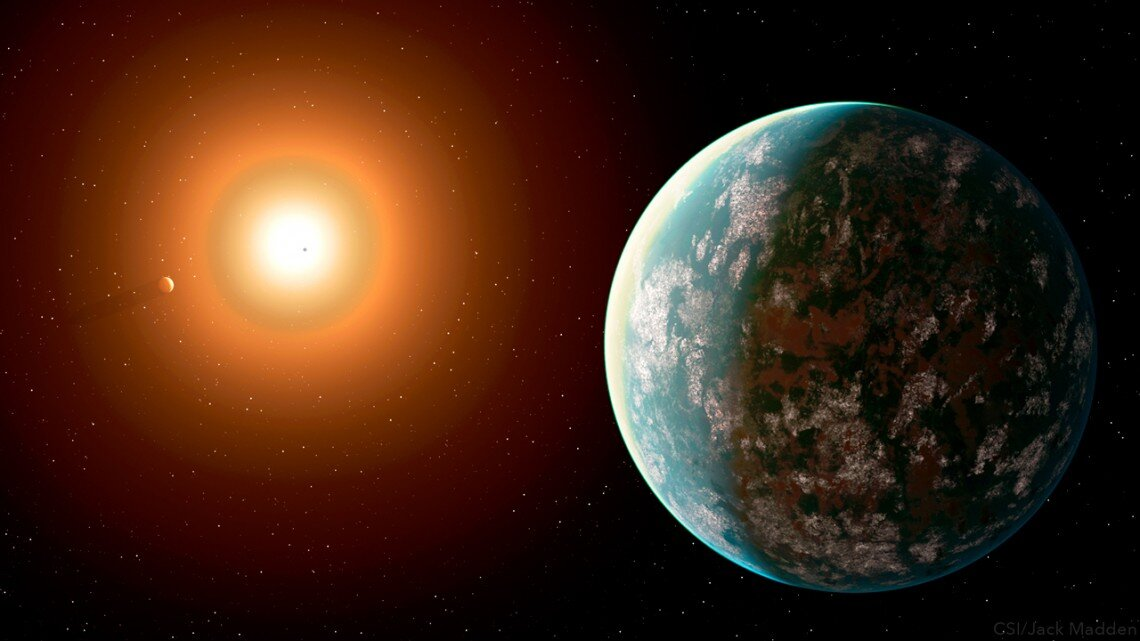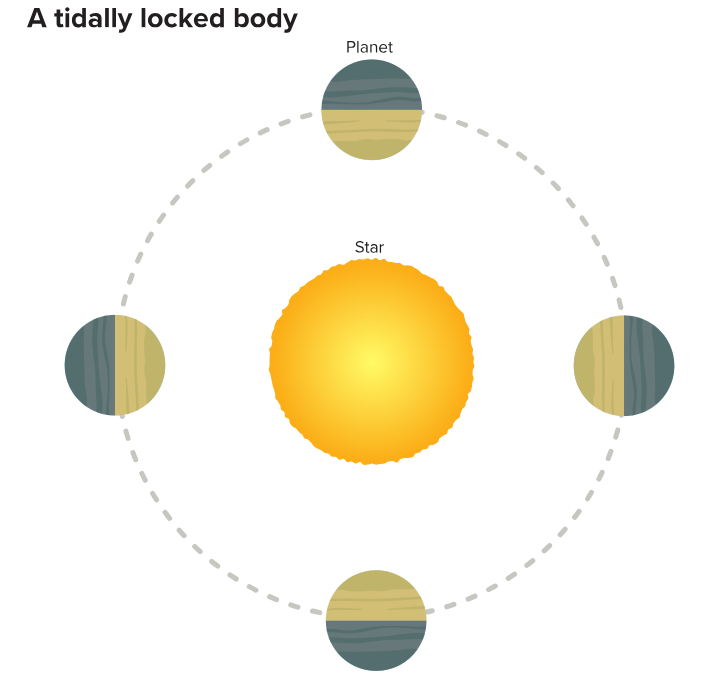Description

Copyright infringement not intended
Picture Courtesy: https://phys.org/news/2019-07-tess-satellite-uncovers-nearby-super-earth.html
Context: Astronomers confirm the first tidally locked super-Earth exoplanet, LHS 3844b, using Spitzer Space Telescope data to reveal temperature variations, indicating its perpetual orientation toward its star.
Key Highlights
- Tidally locked exoplanets, like the newly confirmed LHS 3844b, are celestial bodies that have one hemisphere permanently facing their host star, while the other remains in permanent darkness. This phenomenon is known as tidal locking.
- Tidal locking occurs due to gravitational forces between a planet and its star, causing the planet's rotation period to synchronise with its orbital period. As a result, one side of the planet always faces the star, experiencing permanent day, while the opposite side remains in permanent night. This creates extreme temperature differences and unique atmospheric conditions.
- In the case of LHS 3844b, astronomers utilised infrared data from the Spitzer Space Telescope to measure the planet's surface temperature. By observing fluctuations in temperature at different points in its orbit, they inferred the presence of tidal locking.

Exoplanet
- An exoplanet is a planet located outside our Solar System. The first potential evidence of an exoplanet was observed in 1917, though it wasn't recognized as such at the time.
- The first confirmed detection occurred in 1992, with subsequent confirmations following. As of April 1, 2024, there have been 5,653 confirmed exoplanets discovered in 4,161 planetary systems.
- There are various methods used to detect exoplanets, including transit photometry and Doppler spectroscopy, among others. These methods often favour the detection of planets located close to their host stars. As a result, many exoplanets detected so far are within the tidal locking zone of their stars.
- A significant focus of exoplanet research is the search for potentially habitable worlds. These are planets that orbit within their star's habitable zone, where conditions may allow for the presence of liquid water on the surface—a key ingredient for life. However, the study of planetary habitability considers various factors beyond just the presence of water.
Source:
Phys.org
Wikipedia
|
PRACTICE QUESTION
Q. What is the defining characteristic of a tidally locked exoplanet?
A) It has a thick atmosphere.
B) It orbits its star in a highly elliptical path.
C) One side permanently faces its star, while the other is in permanent darkness.
D) It is composed primarily of rocky materials.
Answer: C
|











